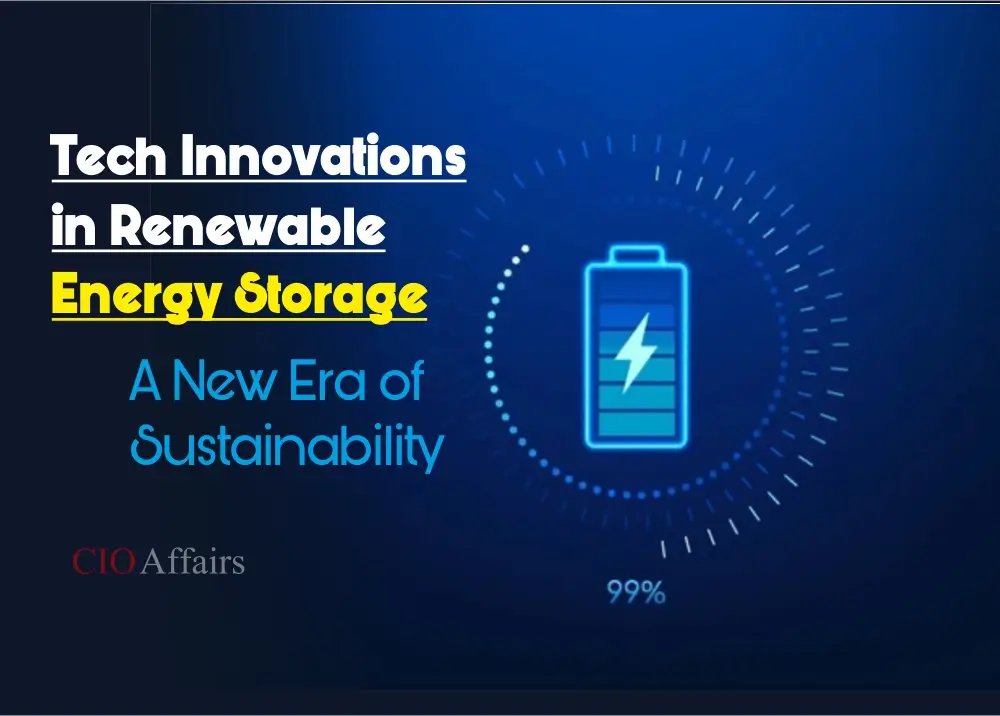In recent years, renewable energy has emerged as a cornerstone of the global shift towards a more sustainable and environmentally-friendly future. However, one of the significant challenges that still needs to be addressed is the efficient storage of renewable energy. Given the intermittent nature of sources like solar and wind, effective storage solutions are crucial for ensuring a steady and reliable energy supply. Fortunately, recent technological innovations in renewable energy storage are making great strides towards overcoming these challenges.
The Importance of Energy Storage
Energy storage is vital for balancing supply and demand in renewable energy systems. Unlike traditional fossil fuel-based power plants, which can provide a constant output, renewable energy sources are subject to fluctuations based on weather conditions and time of day. Energy storage systems (ESS) bridge this gap by storing excess energy produced during periods of high generation and releasing it during times of low generation.
Advances in Battery Technologies
- Lithium-Ion Batteries
Lithium-ion (Li-ion) batteries have been the dominant technology in the energy storage market due to their high energy density, long cycle life, and relatively low cost. Innovations in Li-ion technology are continuously improving their performance. For instance, researchers are developing new chemistries and materials, such as solid-state batteries, which promise to offer higher energy densities and enhanced safety compared to traditional Li-ion batteries.
- Flow Batteries
Flow batteries, such as vanadium redox flow batteries, offer a promising alternative to traditional battery technologies. These batteries store energy in liquid electrolytes that flow through the system. This design allows for greater scalability and longer cycle life. Recent innovations in flow battery technology focus on improving the efficiency and cost-effectiveness of these systems, making them more viable for large-scale energy storage applications.
- Sodium-Ion Batteries
Sodium-ion batteries are gaining attention as a potential alternative to lithium-ion batteries due to the abundance and low cost of sodium compared to lithium. Recent advancements in sodium-ion technology have improved their energy density and cycle life, positioning them as a competitive option for grid-scale energy storage. Researchers are working on enhancing their performance to match or exceed that of lithium-ion batteries.
Novel Energy Storage Technologies
- Compressed Air Energy Storage (CAES)
Compressed Air Energy Storage involves compressing air and storing it in underground caverns or tanks. When energy is needed, the compressed air is released, heated, and expanded to drive a turbine that generates electricity. Innovations in CAES technology are focusing on improving efficiency and reducing costs. For example, adiabatic CAES systems capture and store the heat generated during compression, which can be used to enhance overall system efficiency.
- Pumped Hydro Storage
Pumped hydro storage is one of the oldest and most widely used forms of energy storage. It involves pumping water from a lower reservoir to a higher one during periods of low energy demand and releasing it to generate electricity during peak demand. Innovations in pumped hydro technology include the development of modular, small-scale systems that can be deployed in locations with less topographical variation.
- Thermal Energy Storage
Thermal energy storage systems store excess energy in the form of heat. One approach involves using molten salts, which have high heat capacities, to store thermal energy. This heat can then be used to generate steam and drive turbines to produce electricity. Innovations in this field focus on improving the thermal conductivity and efficiency of these materials, as well as developing more cost-effective systems.
Emerging Concepts and Research
- Hydrogen Storage
Hydrogen is another promising candidate for energy storage. Excess renewable energy can be used to produce hydrogen through electrolysis. The hydrogen can then be stored and used in fuel cells to generate electricity when needed. Recent advancements in hydrogen storage include the development of more efficient electrolysis techniques and novel materials for storing hydrogen at lower pressures and temperatures.
- Gravity-Based Storage
Gravity-based energy storage systems, such as the Energy Vault, use excess energy to lift heavy weights to a higher elevation. When energy is needed, the weights are lowered, and their gravitational potential energy is converted back into electricity. This technology is being refined to improve efficiency and scalability.
- Bioenergy Storage
Bioenergy storage leverages organic materials, such as agricultural waste or dedicated energy crops, to store energy. These materials can be converted into biofuels or biogas, which can then be used to generate electricity. Innovations in this area include improving the efficiency of bioenergy conversion processes and developing more sustainable feedstocks.
Integration and Future Prospects
The integration of these storage technologies into existing energy infrastructure is crucial for realizing their potential. Advances in grid management and smart grid technologies are enabling more effective use of renewable energy and storage systems. As these technologies continue to evolve, they are expected to play a key role in enhancing the resilience and reliability of energy systems.
Moreover, ongoing research and development efforts are focused on reducing costs, improving efficiency, and scaling up these technologies to meet growing energy demands. Collaboration between governments, academia, and industry will be essential for driving innovation and achieving the necessary breakthroughs in energy storage.
Technological innovations in renewable energy storage are paving the way for a more sustainable and reliable energy future. From advancements in battery technologies to novel storage concepts, the progress being made is both exciting and promising. As these technologies continue to mature and become more cost-effective, they will play a crucial role in addressing the challenges associated with renewable energy and supporting the transition to a low-carbon economy. The future of energy storage is bright, and the innovations on the horizon offer hope for a cleaner, more sustainable world.
Top of Form
Bottom of Form










